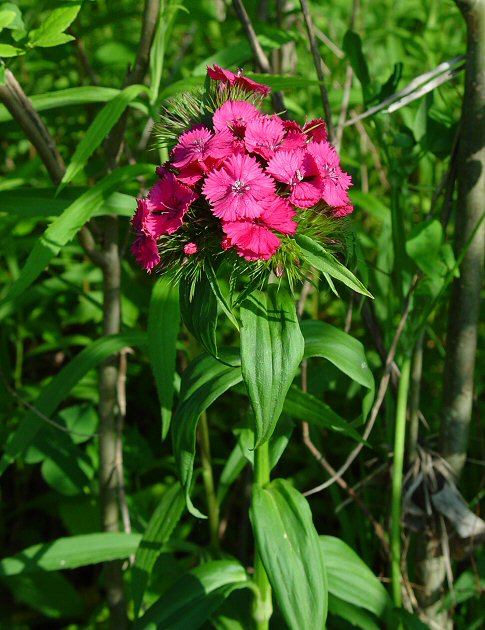Dianthus barbatus L.
Sweet William

Introduced
CC = *
CW = 5
MOC = 3
© DETenaglia
Dianthus barbatus L.Sweet William | |
 |
Introduced CC = * CW = 5 MOC = 3 |
© DETenaglia |
|
Family - Caryophyllaceae Stems - To .75m tall, glabrous, herbaceous, typically simple but sometimes branching above, 4-angled (the angles rounded).
Leaves - Opposite, lanceolate, elliptic or oblong, to 8cm long, 2cm broad, glabrous, sessile to short-petiolate, entire or minutely ciliate. Inflorescence - Terminal cyme of 5-30 flowers, dense. Flowers - Petals 5, clawed, variously colored, fringed. Stamens 10, included to slightly exserted. Styles 2. Calyx tubular, striate, to 1cm long. Fruit a capsule, many seeded, +/-1cm long.
Flowering - June - August. Habitat - Cultivated and rarely escaped. Origin - Native to Eurasia. Other info. - Dianthus barbatus is the most common species of the genus cultivated in this state. The plant has many varieties, mostly differentiated by flower color, but also size. Photographs taken off the MKT Trail, Columbia, MO., 5-17-04. |